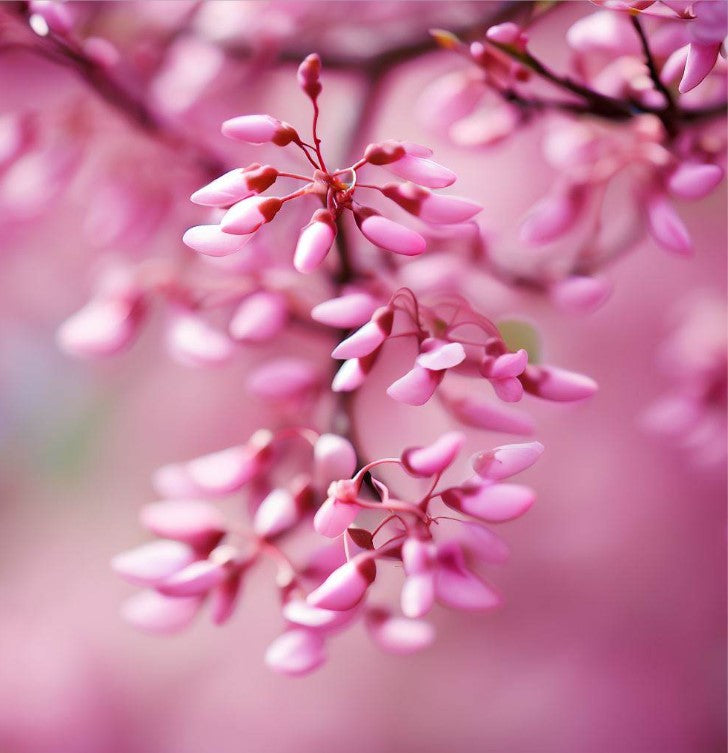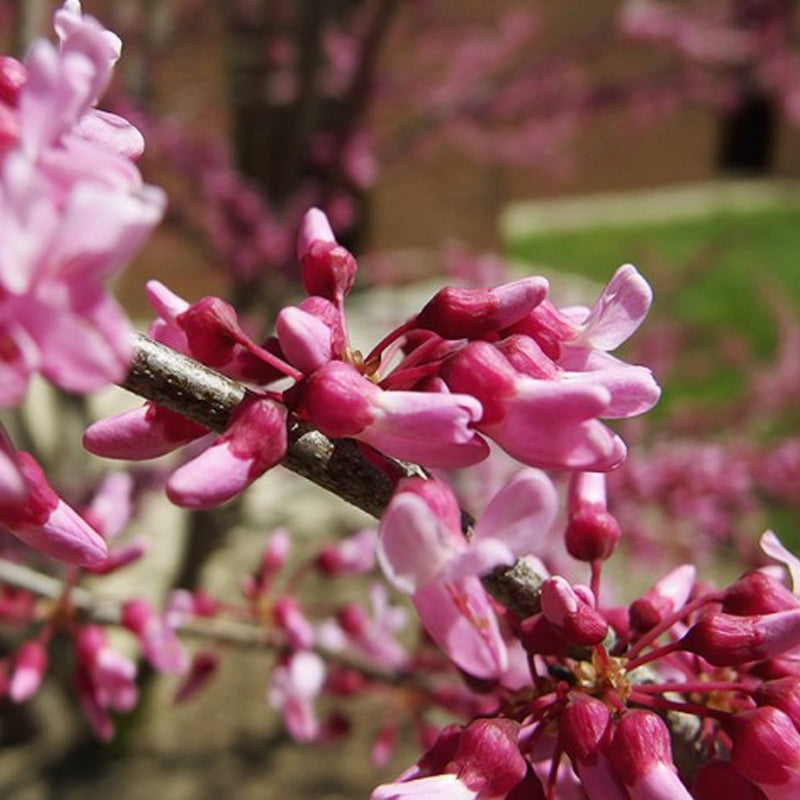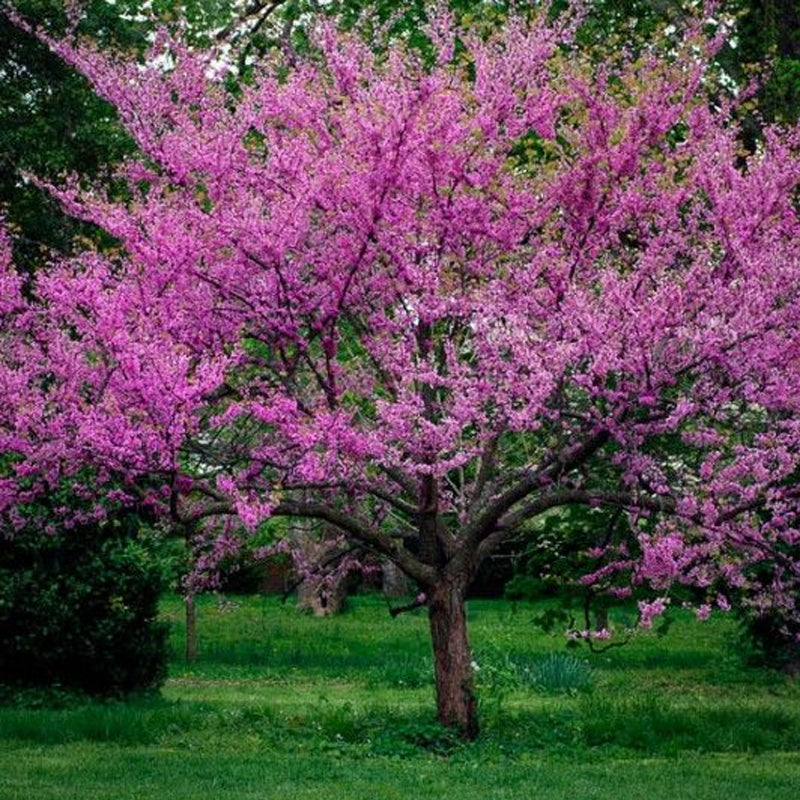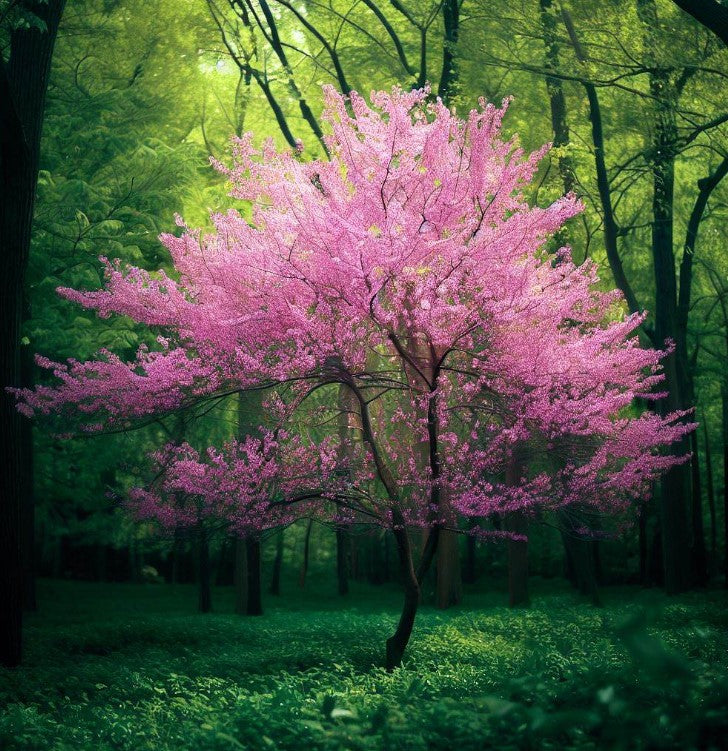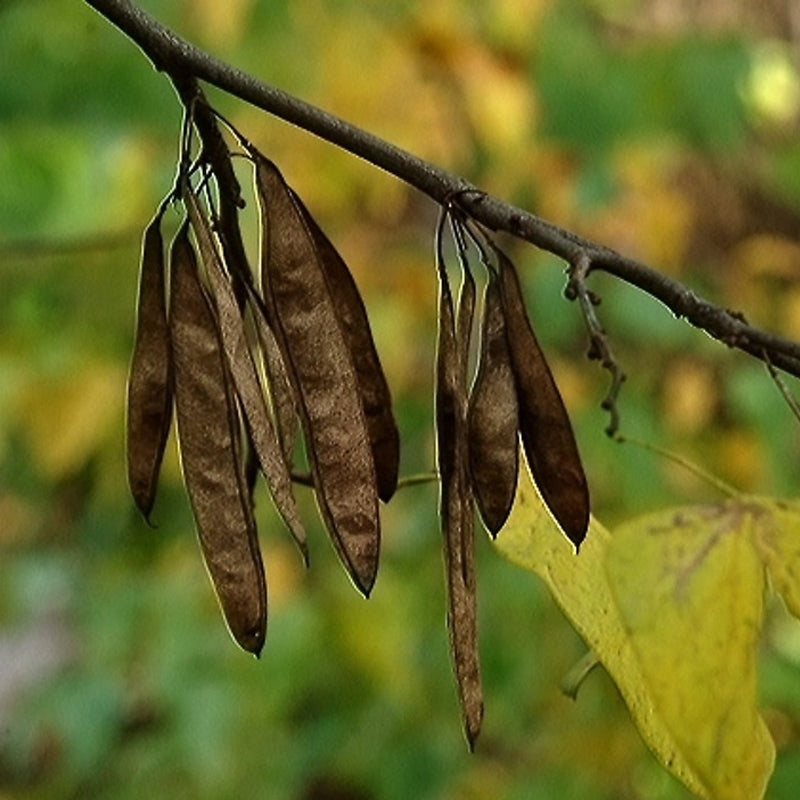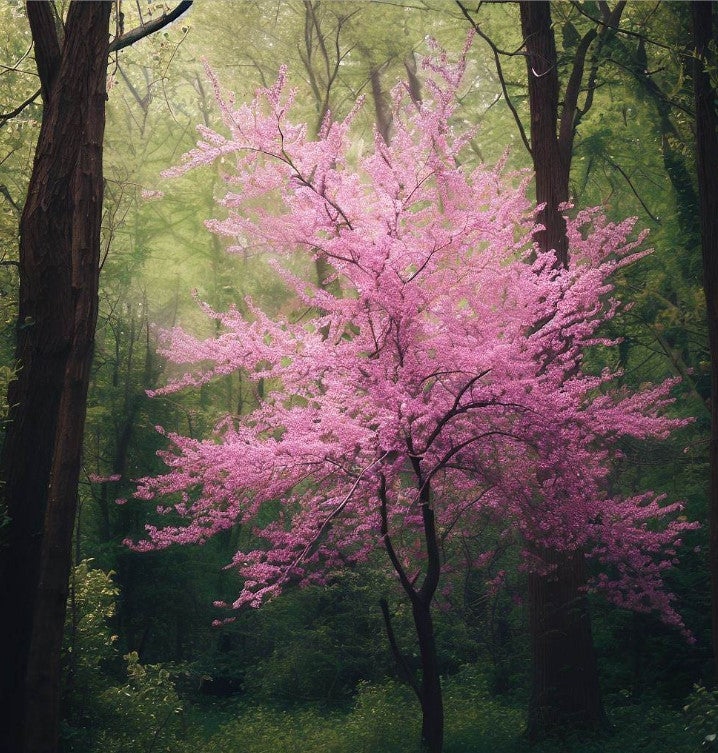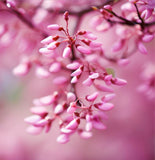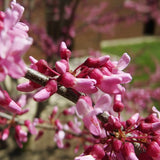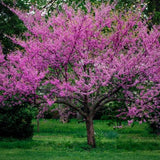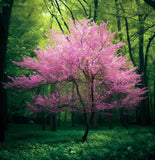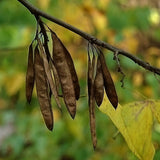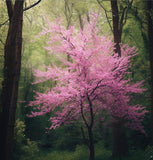Cercis canadensis (Eastern Red Bud, Redbud) Northern Zones 4-7
Cercis canadensis (Eastern Red Bud, Redbud) is a deciduous tree native to eastern North America. A small to medium-sized tree that typically grows to a height of 20 to 30 feet (6 to 9 meters). It has a rounded to vase-shaped crown and a short, often twisted trunk.
The bark is smooth and gray when young, becoming darker and developing shallow furrows as the tree ages. The leaves are alternate, heart-shaped, and bright green. They turn yellow in the fall before dropping.
Flowers and Fruits: One of the distinctive features of the Northern Red Bud tree is its vibrant and showy flowers. In early spring, before the leaves emerge, the tree is adorned with clusters of small, pink to purple flowers that bloom along the branches and trunk. The flowers are pea-like in shape and provide a beautiful display. After flowering, the tree produces flattened, brown pods that contain seeds. These pods persist on the tree throughout the winter and can be decorative.
Habitat and Range: Cercis canadensis is commonly found in various habitats, including woodlands, forests, and along woodland edges. It prefers well-drained soils and can tolerate a range of soil types. The tree is native to eastern North America, including parts of the United States and Canada.
Uses: Valued for its ornamental qualities. It is often planted in gardens, parks, and landscapes for its attractive flowers and unique branching pattern. The flowers provide early spring color and are a favorite of bees and other pollinators. The tree's small size makes it suitable for smaller yards. Additionally, the wood of the Northern Red Bud is dense and can be used for small woodworking projects.
Ecological Importance: Cercis canadensis provides habitat and food for various wildlife species. The flowers attract bees, butterflies, and other pollinators. The tree's seeds are eaten by birds and small mammals. Additionally, the tree's dense branching pattern provides shelter for birds and nesting sites for some bird species.
Cultural Significance: Often celebrated as a harbinger of spring with its vibrant display of flowers. It is a popular choice for ornamental planting and has become a symbol of beauty and renewal.
Botanical Name : Cercis canadensis
Common Name : Northern Redbud
Height : 20-30 ft
Spread : 25-35ft
Germination Info : Scarify seed and then cold moist stratify for 30-60 days
Hardiness zone : 4-7
Average seed per ounce : Approx. 1,000

